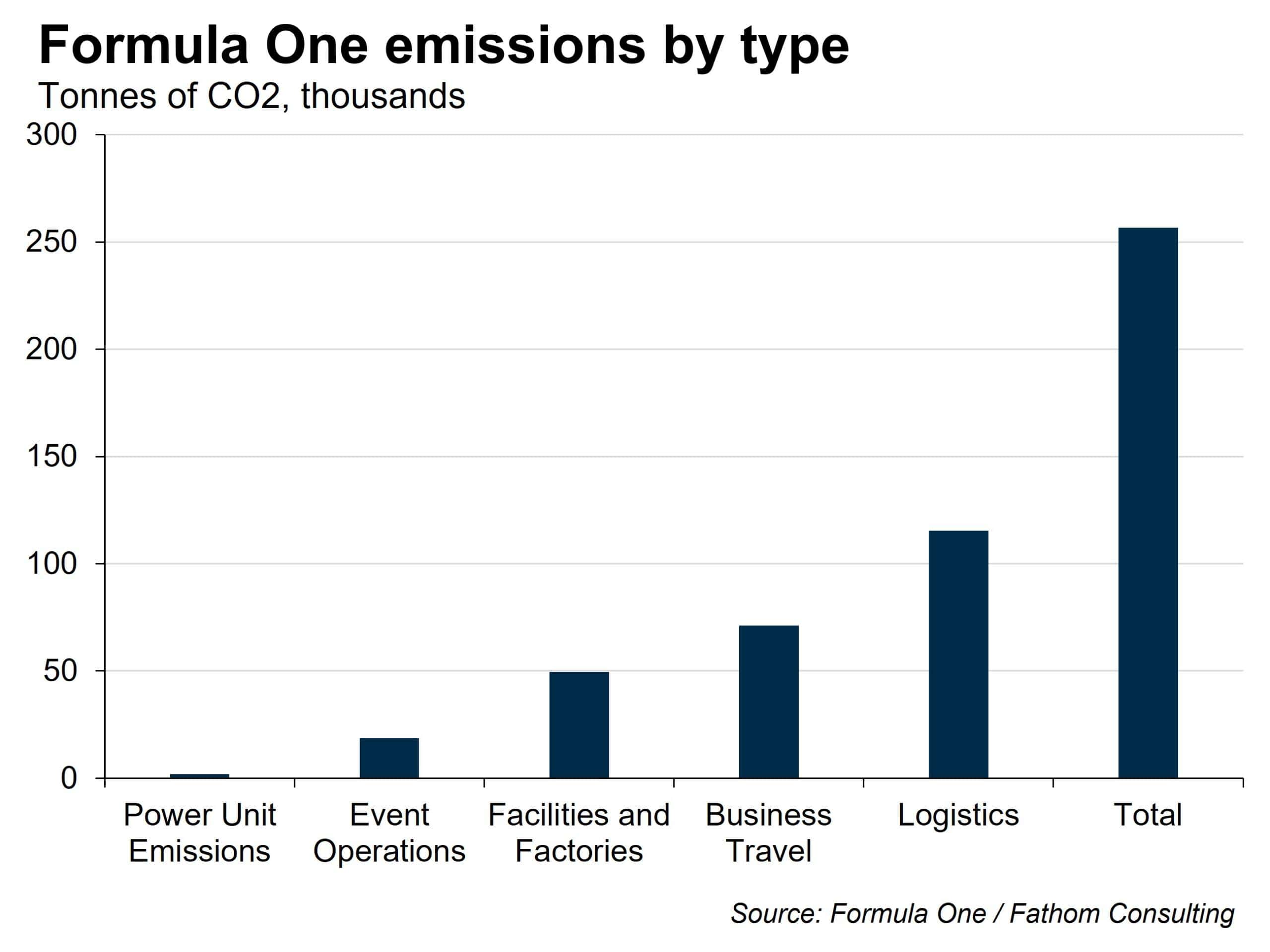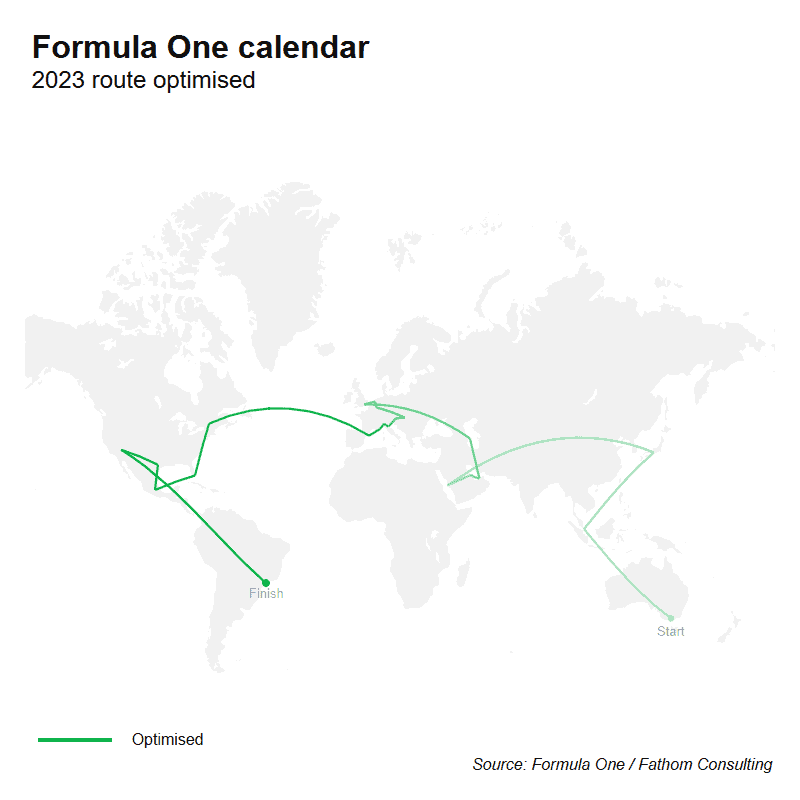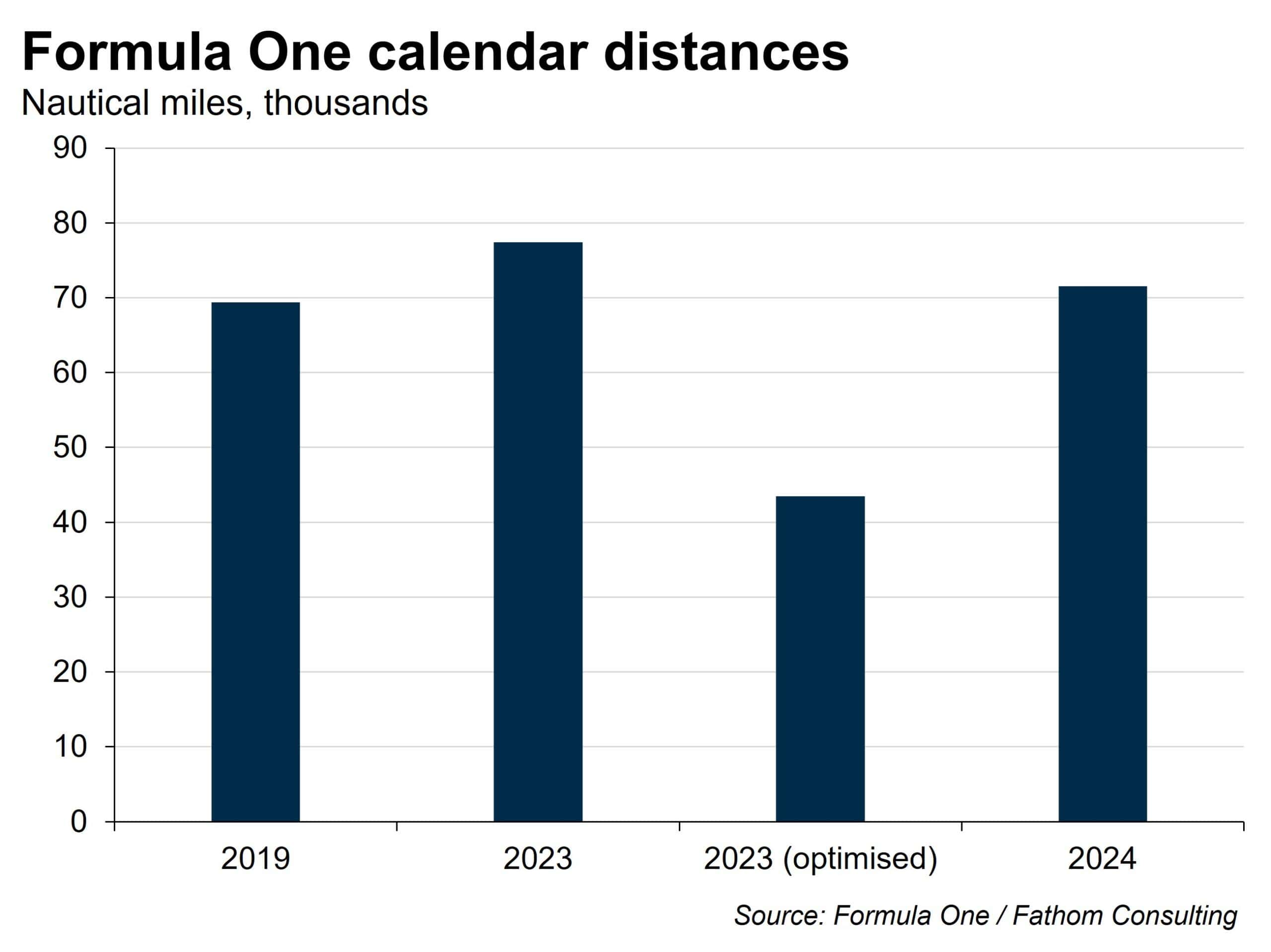A sideways look at economics
Formula One’s global popularity is undeniable. With the cumulative TV audience peaking at 1.55 billion over the course of the 2021 season, it is no surprise that the premium motorsport has become a multi-billion-dollar business, bringing in fans from all corners of the world. Forbes estimates the total value of all ten racing teams to be around $18.8 billion, and global media rights are expected to be worth $1.4 billion by 2029. However, as the sport continues to flourish, one query has always been on my mind. How will Formula One transition to net-zero emissions?
My first real experience with F1 was watching the 2022/2023 Silverstone Grand Prix. I’d never been a huge fan and was sceptical at first, although I found myself grudgingly beginning to enjoy the race, which reminded me of whizzing miniature cars around (and usually off) a Scalextric track.[1] But real-life F1 cars are anything but battery powered. The sport is deafeningly and defiantly built upon burning fuel and seems set to remain that way long into the future — at least, until Formula E (electric) race cars begin out-performing their gas-guzzling counterparts.
It’s interesting to note, however, that the races themselves only represent a tiny fraction of F1’s total carbon emissions.
Delving into a Sustainability Strategy report [2] which outlines F1’s emissions during the 2019 season, it is actually logistics that makes up 45% of its carbon footprint, a massive 64 times more than Power Unit Emissions (emissions from all practice, qualifying and races). What’s more, the next largest component is business travel, at 27.7%. All in all, F1’s 2019 logistics and business travel emitted a colossal 186,512 metric tonnes of CO2 or CO2 equivalent (mtCO2e). That’s the same as 316,123 flights from London to New York. Initially shocking, these statistics made more sense upon further investigation.

F1 crams over 20 races into a year-long season, which in 2023 features at least one Grand Prix in North America, South America, Australia, Europe, Asia and the Middle East respectively. In the 2019 sustainability report, F1 states that it aims to achieve net zero by 2030. Within its decarbonisation strategy for logistics and travel, its intention is to “maximise logistics and travel efficiency through process and volume optimisation by using the least CO2 intensive transport available”. Quite what “process and volume optimisation” means, and what it would look like, is hard to tell from such a general statement. Even as an outsider, though, I can instantly think of a straightforward solution: why doesn’t Formula One optimise its calendar? If logistics and business travel released over 70% of F1’s total 2019 emissions, then altering the calendar to reduce the total distance travelled from race to race could be an easy way of shrinking its footprint.
Taking a closer look at the F1 racing calendar over the last four years, we can see that the sport accumulated 69,374 nautical miles travelling to and from each circuit in the 2019 season. However, by the end of the 2023 season F1 will have amassed a staggering 77,397 nautical miles, an increase of 11.6%. While this doesn’t necessarily imply that logistics and business travel [3] emissions will increase by 11.6% (21,561 tonnes of carbon dioxide), it’s unlikely they would have decreased considerably.
Regarding calendar restructuring one obvious solution emerges: why not hold all races in one hub — say, Europe? However, the tennis fan in me must protest at this. A large component of growth in any sport is global outreach, and it’s great to allow more people the chance to enjoy F1 in person (even if this enjoyment stems from ear-drum abrasion and fume-huffing)
I still wanted to see if a more climate friendly calendar was viable, while including all the same locations and racetracks. You’d be foolish to think I went through the 23! (23 factorial or 25,852,016,738,884,976,640,000) combinations of the 2023 destination list to find the shortest path; I’m not yet that committed to TFIF. I did, however, utilise theory from the Travelling Salesmen Problem [4] in my solution, categorising the 23 locations into seven hubs and identifying the Hamiltonian cycle with the shortest distance.[5] Although I can’t claim it’s the shortest path possible, I was able to reduce the distance down to… 43,500 nautical miles! That’s a 37.3% reduction from 2019, even with two extra stops.


Some may be wondering what the current state of F1’s transition to net zero looks like. For now, calendar restructuring still seems to be on the back burner. “That’s [future calendar changes] something we’re working on very hard, but it will take time,” says F1’s CEO, Stefano Domenicali.[6] However, logistics improvements aren’t being totally ignored. 18 biofuel-powered trucks are set to deliver equipment in the 2024 European swing. Paul Fowler, the head of motorsport logistics at DHL, says: “We expect a minimum carbon saving of 60% [compared to previous truck emissions]”. What’s more, F1’s Head of Sustainability, Ellen Jones, has acknowledged that less than 1% of F1’s carbon footprint stems from racing fuel. Switching from 747 to 777 aircraft has diminished total emissions by air; and F1 is also reducing the amount of broadcasting equipment and other gear transported from race to race. [7] However, the lack of attention to calendar restructuring can be observed directly through F1’s 2024 calendar, which will accumulate a total of 71,552 nautical miles, 64.5% higher than my optimal 2023 Route (see the table below for the 2024 calendar).

Aside from logistics, F1 is an industry leader when it comes to motorsports R&D. It is currently working with major fuel manufacturers to develop a 100% sustainable fuel, planned to be implemented in the 2026 season. A new, ‘drop-in’ fuel — so-called because it can be used in road cars’ internal combustion engines without modification — will no doubt bring huge positive externalities if developed. [8] Another global benefit will come from the increased demand for cleaner fuel ‘driven’ by F1. This higher demand should boost supply of such fuels, bringing costs down for everyone in the future.
However, in the realm of corporate net-zero commitments, it is often the straightforward solutions that are overlooked in favour of complicated ones. In F1’s case, a calendar restructure, along the lines explored in this note, could be a sure-fire way of easily reducing emissions.

[1] Scalextric is a brand of ‘slot-car’ racing, where miniature cars race against each other on a special track, getting their power from a slot in the middle of each lane.
[2] See F1 Sustainability Strategy
[3] F1 utilises travel by air, land and sea to conduct its logistics. Between races, a proportion of equipment may be transported back to a team HQ, however, most of the equipment as well as team staff will go directly from one race to the next. Within the European portions of a season, the majority of business travel/ logistics is via truck. Due to this complexity, we cannot infer any exact change in emissions due to a calendar restructuring.
[4] The Travelling Salesman Problem goes like this: given a list of locations and the distances between each location, what is the shortest possible route that visits each location once? Mathematically, this can be represented using graph theory. The locations are represented as nodes, and the distances between them are represented as weighted edges. The goal is to find a Hamiltonian cycle (a cycle that visits every node exactly once) with the minimum total weight.
[5] To calculate the optimised path, I categorised the 2023 calendar locations into seven hubs, each with its own hub capital: Singapore (Singapore), North America (Austin), Europe (Milan), South America (São Paulo), Asia (Nagoya), Australia (Melbourne) and the Middle East (Abu Dhabi). Using these hub capital locations, I created a distance matrix and wrote a Python code that would calculate all 7! (5040) route combinations and select the shortest one. This outputted the following route: Melbourne, Singapore, Japan, Abu Dhabi, Milan, Austin, São Paulo. From here, I applied the same process to each hub, calculating the shortest route between locations (e.g., for the Middle East, the shortest journey calculated was Jeddah, Bahrain, Doha, Abu Dhabi, Baku). The final step was to list all 23 countries of the new calendar and calculate the final distance!
[6] See Net Zero Carbon: How Formula 1 is going to meet this ambitious target by 2030 | Formula 1®
[7] See How logistics experts DHL are helping Formula 1 hit their Net Zero by 2030 target | Formula 1®
[8] See F1 continues push to hit Net Zero Carbon by 2030 target | Formula 1®
Read more TFIFs